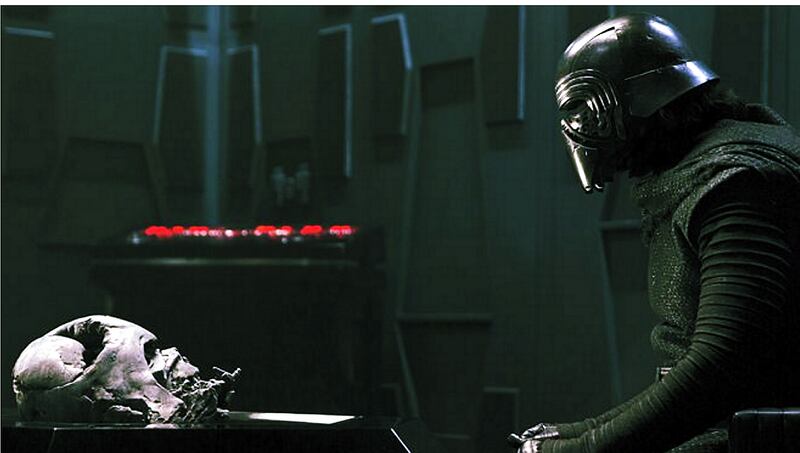It appears now nearly certain that The Force Awakens will become the highest grossing film of all time. The last few months have seen a daunting stream of promotional tie-ins as all the usual suspects - toys, games, chopsticks, vacuum cleaners, a generous selection of waffle makers – are pushed into the audience's eyes from every angle. If by some chance you haven't read the promotional material that came alongside your commemorative egg shapers, JJ Abrams will be directing an entirely new chapter in the series that will land in cinemas on December 17th, the latest trailer having encouraging a great deal of excitement.
There's hype, there's overhype, and there's the kind of hype that makes the crew of the International Space Station – who live in space - don Jedi robes in celebration like the lovable dorks they are. Against this backdrop, it's curious that the public have failed to become fatigued.
The fact is: people are optimistic. Despite the basic plot, simple structure and George Lucas' inability to imagine a planet with more than one type of weather, the three original Star Wars films created a living, breathing world that the public were eager to revisit. Then came the prequels, the worst hours of which resembled a Martian soap opera about city planning meetings. Amidst talk of positive reaction to the various Force Awakens' trailer, we should remember 1999's The Phantom Menace's trailer was also released to a rapturous reception, and that movie introduced itself with a text description of a tax dispute, and got less interesting from there.

The one thing even critics agreed in 1999 was that The Phantom Menace was a technical marvel, boasting dazzling effects, fantastical backdrops and fully artificial characters hitherto unseen on film. But the chilly, artificial tang of 1990s greenscreen has dated worse than a corduroy bumbag. At the time, many raved about the realistic nature of its most ill-advised character, the pratfall irritant Jar Jar Binks. Sixteen years later, Jar Jar looks about as lifelike as a giant, orange, slightly racist version of the talking paperclip from Microsoft Word.
By contrast the animatronics, models and puppetry of The Force Awakens appear to hark back to the original movies, which undoubtedly had a weight and feel that is lacking in the prequels. The sets were solid and just the right side of cartoonishly authentic, with a grubby, worn, faded aesthetic that made things feel used and real. All signs point to JJ Abrams embracing not only the look, but the methodology, of these earlier films.
Inarguably the most impressive indication of this is the footage unveiled at ComicCon earlier this year, which began with nearly a minute's worth of shots of real sets, rubber suits and practical effects. It's unlikely that a 30-second sequence of clapperboards has ever so enflamed expectation for a film, but Abrams' eagerness to use those more clasic film-making techniques has made even the jaded, blackened hearts of the internet commentariat skip a collective beat.
In terms of plot, the camp have been predictably tight-lipped, though speculation among fans has been both rife and bewilderingly specific. Set 30 years after Return of the Jedi, the movie follows scavenger Rey (Daisy Ridley), reformed stormtrooper Finn (John Boyega) and Poe Dameron, a cocksure rebel fighter pilot played by Oscar Isaac, about which little is known, save that his name is, delightfully, just one letter away from Cameron Poe, the mulleted, origami-loving action hero played by Nicholas Cage in Con Air.
Over on the Dark Side
Meanwhile, chief antagonist Kylo Ren is a "dark warrior" played by Adam Driver, and one who boasts a fancy, if pleasingly silly, new type of lightsaber. The film also features Domhnall Gleeson as General Hux, another villain who appears to be vying for power with Ren. The decision to re-hire the original cast has also been greeted enthusiastically by the faithful, and each veteran seems game to reprise their old roles. Even Harrison Ford, whose recent performances have spanned the full spectrum between sleepy and concussed, appears to be injecting a bit of energy into the role of Han Solo.
The diverse make-up the new cast also signals a departure from all previous outings. Discounting Leia, just 63 seconds of dialogue are spoken by women during the 386 minute runtime of the original trilogy. The casting of Daisy Ridley, Lupita Nyong'o and Gwendoline Christie in key roles looks like a move toward redressing that balance, as does the greater selection of non-white actors.
Of course, it's unclear if any of these presumptions will come to bear onscreen, and little to no real insight can yet be discerned regarding the film's characterization or script. We do know that Abrams' previous work has blended incident and suspense with a light comic touch, with 2011's Super 8 in particular often cited for its similarities to the great Lucas and Spielberg movies of the 1970s and 1980s. Though criticised for having a retina-shredding volume of lens flare, it could be argued that the dash and swagger of Abrams' Star Trek movies, coupled with the jokey chemistry he wrings out of his actors, is a style much better suited to a Star Wars vehicle.
One thing we do know is that such predictions will have little effect on the film’s huge success, an outcome which now seems all but inevitable. What remains to be seen is whether it can hold together as a dramatic work.
Although, on the other hand, the makers of Brooklyn can only dream of commemorative egg shaper sales that the R2D2 model is going to amass.











